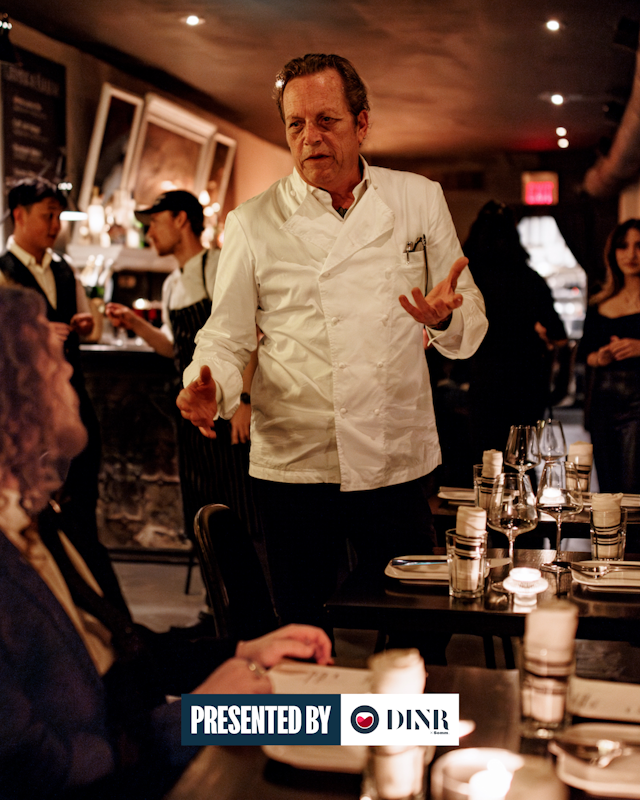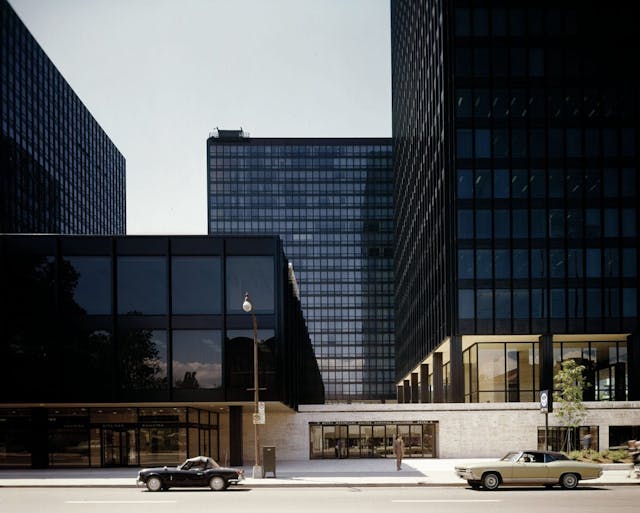"Creatives dictate this city": Inside 20 years of the Montreal designer fair SOUK
The roaming showcase of Montreal designers' work—both recognized and not—and the exceptional modern lifestyle objects they create for the everyday.
 Akorana, one of the designers featured in the 19th edition of SOUK. | Photograph: MOODSHOTS DESIGNERS © Arseni Khamzin
Akorana, one of the designers featured in the 19th edition of SOUK. | Photograph: MOODSHOTS DESIGNERS © Arseni KhamzinMontreal is a city by and for designers.
There are, however, only so many events, fairs, collections, curations, platforms, and festivals that are capable of harnessing the currents that flow from its wellspring of creativity—and then there’s SOUK.
What started in 2003 is now in its 19th edition, but its essence remains intact: A near-annual curated selection of Montreal’s designers—both recognized and not—and the exceptional modern lifestyle objects they create for the everyday.
Named for the bazaars of the Middle East, North Africa and beyond, SOUK has since its first iteration been a roaming non-profit event where Montreal collects and enters a deep discourse around the creative thinking of artists that call it home.
It is, at its core, a community or artistry, where the storylines of its designers form a tapestry that shifts with every passing edition—as generations of designers come and go and each year represents a refreshed selection, so too does what is featured, now selected by a panel of 65 designers.





Members of this year's jury for SOUK's 19th edition. Clockwise from top left: Agathe Bodineau, Hideyuki Imaizumi, Jennifer Wicks, Guillaume Ménard & David Dworkind, Bryan-K. Lamonde. | Photograph: Alexis Goncalves
This year, SOUK arrives at the raw environment of an old garment factory in Mile-Ex: Much like how it has told the story of its locale at past locations like the Société des arts technologiques, Saint-Henri’s RCA Building, or the 20th floor of Place Ville Marie, this year’s iteration recalls Montreal’s history as the textile capital of the country.
Now known as the “architects” district, the space redesigned by Sid Lee Architecture features curvaceous cement-like surfaces—a stark canvas in which the objects are placed in an almost museological fashion.
But as artful it presents itself and creates a stage for the designers it features, SOUK is first and foremost grounded in a deep passion for its city.



The work of Félix Dicaire, the space of SOUK's 19th edition in Mile-Ex, and Appareil Atelier. | Photograph: MOODSHOTS DESIGNERS © Arseni Khamzin
The creatives dictate the city. It’s about what’s beautiful, what’s out there—everywhere you can imagine from a creative point of view, people do it out of passion, and it comes from within.
The soul of a city
“Montreal is distinctive because it has its own character. I always get asked what makes Montreal so special and what it is, and I always say it has a soul,” says SOUK’s founder Azamit.
“A soul is not always something you can describe, it’s an emotion. You see it, you walk around, you feel it. There’s an aura to it that’s very hard to describe.”
The creative director, curator, stylist, past fashion editor of ELLE Canada for 15 years, and founder of the furniture brand Hinsta Rudman with her husband Francis Rudman, Azamit has spent much of SOUK’s lifespan celebrating a core, key facet of Montreal—its creativity.
If you love (Montreal)? You understand its soul and you’re feeding the creatives that make the city what it is, and you’re seeing all the art that they’re putting out there.
“The creatives that make the city what it is are the ones that bring that special aura to the city that you connect with… The creatives dictate the city. It’s about what’s beautiful, what’s out there—everywhere you can imagine from a creative point of view, people do it out of passion, and it comes from within,” she explains.
“You either love Montreal or you don’t, and if you don’t, it’s because you’re only seeing it from an aesthetic point of view, whereas if you love it? You understand its soul and you’re feeding the creatives that make the city what it is, and you’re seeing all the art that they’re putting out there.”
Following the movement of creatives over the last decade and change when artists began becoming the designers they’ve recognized as today—whether it was in the Plateau or the Mile End—Azamit has seen lives grow and flourish throughout different areas up to today when Montrealers take a greater pride in their neighbourhoods and know the value of what’s local.




Clockwise from top left: Verre d'Onge, ināt., Gabriel Page, Reggyy. | Photograph: MOODSHOTS DESIGNERS © Arseni Khamzin
What makes you a good curator is your ability to filter. It takes discipline, organization, and passion.
Coming together
Who hasn’t experienced a wealth of creativity in the city and wanted a way to bring it together in a way that the city at large could experience it?
So, what's it take to curate something like SOUK?
“If you’re very obsessive like me, you want to look at every detail to make sure it’s at the level you want to deliver. The more you see things, the more layers appear as you move forward, and it becomes a complete obsession, adding things as you move along,” Azamit says.
“But what makes you a good curator is your ability to filter. It takes discipline, organization, and passion.”
“People tend to think you walk around saying yes, no, yes, no, but you’re working with a lot of teams. In the creative industry, you’re dealing with a lot of egos, so you have to put yourself aside to adjust to others’ desires, needs, and visions…”
“It’s not just about you, but you need to compromise a lot.”




Clockwise from top left: Margot, Martine Dupuis, Fusion F., Laboratoire Textile | Photograph: MOODSHOTS DESIGNERS © Arseni Khamzin
Another horizon?
Having taken a pause during the pandemic and another to reevaluate how much SOUK has done in the past, Azamit says this year’s edition is a chance to see how the community will respond, especially with current economic conditions.
“Eventually, we’d like to do more experiences,” she says, pointing to small experiential events to activate the industry and community. The dream, she says, is to come up with ways that can build off the central SOUK event as opposed to repeating it and thereby diminishing its year-long efforts.




Clockwise from top left: Elisa C Rossow, CYRC, Le Mélèze, Studio Chiron| Photograph: MOODSHOTS DESIGNERS © Arseni Khamzin
We’ve made it accessible for everyone. I don’t need you to go to school for 10 years to be considered a professional. If you have the talent and you can make something amazing, you’ve got a platform where you can showcase and make a career and brand out of it.
As the souk moves, the city evolves
For a long time, Montreal’s designers and the exchange of their work was relegated to their ateliers and networks—we’re talking pre-#shoplocal. Cloistered according to who they knew in their immediate circles, often according to the language they spoke,
“SOUK was really the first platform that brought those communities together, and we were able to attract clientele that were design lovers and that were passionate about hunting to find those designers,” says Azamit.
Montreal’s designers were also more focused on crafts as well at the beginning, but SOUK became a vehicle where they could share skills, connect, resources and materials, exchange knowledge and communicate to the point of collaborating, start and merge brands—or even start families.
“It’s the opportunity to try something and have such a huge public look into their work and feel validity,” she says. “(At SOUK), they can test their product, test their clientele, and connect with their community. I’ve seen the design industry go from being extremely crafty to something more professional, and it’s really exciting to see that.”
SOUK, in many ways, has been the harbour where designers of Montreal have evolved over time. Their stories, their brands, their potential—all of it, much like a design that gets refined over time, gets crystallized in the space it creates.
“We’ve made it accessible for everyone. I don’t need you to go to school for 10 years to be considered a professional. If you have the talent and you can make something amazing, you’ve got a platform where you can showcase and make a career and brand out of it.”
The 19th edition of SOUK is running from November 29th to December 3rd, opening to the public in the Mile-Ex at 7070 rue Saint-Urbain. Tickets to attend are $15 to cover operating costs, and are available here.
![The Bulletin: Local heat for low-temp nights 🫕 [Issue #52]](/_next/image?url=https%3A%2F%2Fthemain.ghost.io%2Fcontent%2Fimages%2F2023%2F11%2F273745227_5038428359553145_7479238073259449741_n-1.jpg&w=640&q=75)






